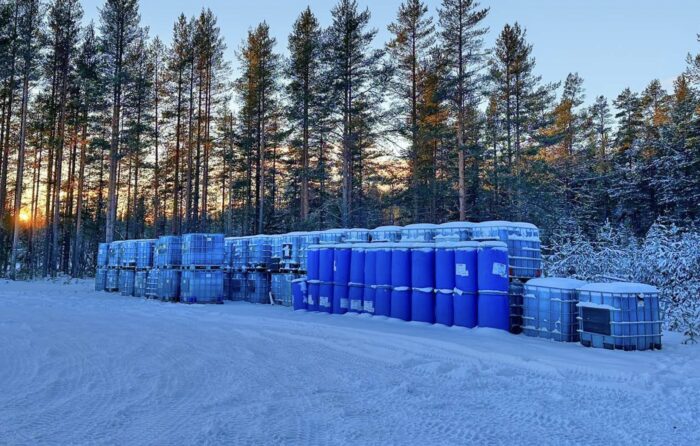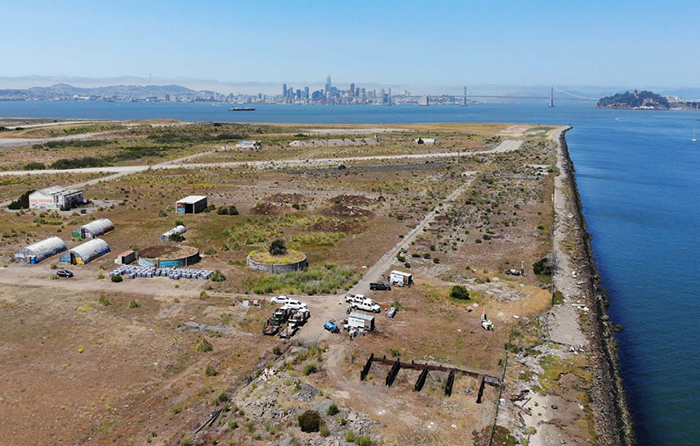PFAS Research Articles Supporting Colloidal Activated Carbon Technologies
Resources from Peer-Reviewed Research
The use of in situ colloidal activated carbon (CAC) to treat PFAS continues to garner attention and support from leading environmental scientists and experts. This section provides a selection of peer-reviewed, third-party publications in support of this proven and effective remedial technology. This proven PFAS remediation approach is gaining widespread adoption due to its efficacy in eliminating PFAS risk and lowering the treatment cost as compared to ex situ approaches using pump-and-treat technologies. Consensus among environmental experts underscores the significance and potential colloidal activated carbon represents to effectively eliminate PFAS risk on a range of sites long-term.
The articles included in this section cover a range of topics related to sorption of contaminants, contaminant movement and treatment methods. Modeling contaminant movement through vadose zones, capillary fringes, and discharge to groundwater is also discussed. In addition, research exploring the long-term leachability and efficacy of activated carbon and its sorption capabilities and effectiveness as compared to colloidal activated carbon is explored. Research outlining colloidal activated carbon’s superior injectability and improved treatment efficacy as compared to Biochar and PAC is also provided.
PFAS remediation using in situ colloidal activated carbon (CAC) continues to garner global attention and support from peer-reviewed, third-party publications. This proven PFAS remediation approach is gaining widespread adoption due to its efficacy in eliminating PFAS risk and lowering the treatment cost as compared to ex situ approaches using pump-and-treat technologies. Consensus among leading environmental experts underscores the validity and significant potential for effectively treating PFAS with colloidal activated carbon to eliminate risk long-term.
This section offers an overview of key research, results and ongoing field applications in the treatment of treating PFAS in situ. Included is an evaluation of 17 PlumeStop sites with significant reductions in PFAS concentrations and validation data demonstrating >90% to >99% reduction for most sites.
- Approach
-
The use of in situ colloidal activated carbon (CAC) to treat PFAS continues to garner attention and support from leading environmental scientists and experts. This section provides a selection of peer-reviewed, third-party publications in support of this proven and effective remedial technology. This proven PFAS remediation approach is gaining widespread adoption due to its efficacy in eliminating PFAS risk and lowering the treatment cost as compared to ex situ approaches using pump-and-treat technologies. Consensus among environmental experts underscores the significance and potential colloidal activated carbon represents to effectively eliminate PFAS risk on a range of sites long-term.
- Sorption
-
The articles included in this section cover a range of topics related to sorption of contaminants, contaminant movement and treatment methods. Modeling contaminant movement through vadose zones, capillary fringes, and discharge to groundwater is also discussed. In addition, research exploring the long-term leachability and efficacy of activated carbon and its sorption capabilities and effectiveness as compared to colloidal activated carbon is explored. Research outlining colloidal activated carbon’s superior injectability and improved treatment efficacy as compared to Biochar and PAC is also provided.
- Longevity
-
PFAS remediation using in situ colloidal activated carbon (CAC) continues to garner global attention and support from peer-reviewed, third-party publications. This proven PFAS remediation approach is gaining widespread adoption due to its efficacy in eliminating PFAS risk and lowering the treatment cost as compared to ex situ approaches using pump-and-treat technologies. Consensus among leading environmental experts underscores the validity and significant potential for effectively treating PFAS with colloidal activated carbon to eliminate risk long-term.
- Onsite Examples
-
This section offers an overview of key research, results and ongoing field applications in the treatment of treating PFAS in situ. Included is an evaluation of 17 PlumeStop sites with significant reductions in PFAS concentrations and validation data demonstrating >90% to >99% reduction for most sites.

 Americas
Americas Europe
Europe Français
Français Deutsch
Deutsch Italiano
Italiano Español
Español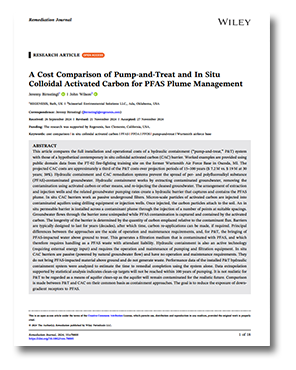 In this article published in Remediation Journal, Jeremy Birnstingl and John Wilson present an analysis of the costs and effectiveness of in situ colloidal activated carbon (CAC) barriers versus traditional pump-and-treat systems for PFAS remediation.
In this article published in Remediation Journal, Jeremy Birnstingl and John Wilson present an analysis of the costs and effectiveness of in situ colloidal activated carbon (CAC) barriers versus traditional pump-and-treat systems for PFAS remediation.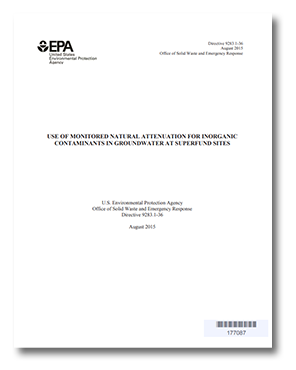 This document published by the US Environmental Protection Agency provides guidance on the use of MNA for a broad range of contaminants at Superfund sites, including EPA policy regarding cleanup of contaminated soil and groundwater.
This document published by the US Environmental Protection Agency provides guidance on the use of MNA for a broad range of contaminants at Superfund sites, including EPA policy regarding cleanup of contaminated soil and groundwater. This article by Charles J. Newell et al. published in Wiley’s Remediation Journal proposes that enhancing PFAS retention can play an important role in reducing PFAS mass flux and providing long-term protection of downgradient groundwater receptors.
This article by Charles J. Newell et al. published in Wiley’s Remediation Journal proposes that enhancing PFAS retention can play an important role in reducing PFAS mass flux and providing long-term protection of downgradient groundwater receptors.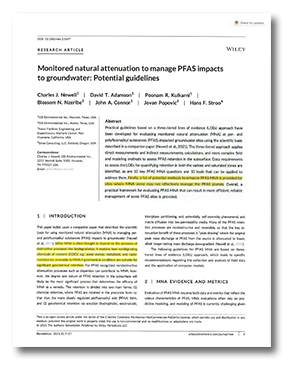 This article by Charles J. Newell et al. published in Wiley’s Remediation Journal discusses practical guidelines based on a three-tiered lines of evidence (LOE) approach for evaluating monitored natural attenuation (MNA) of PFAS.
This article by Charles J. Newell et al. published in Wiley’s Remediation Journal discusses practical guidelines based on a three-tiered lines of evidence (LOE) approach for evaluating monitored natural attenuation (MNA) of PFAS. ITRC provides an overview of PFAS Remediation Technologies, including section 12.2.4, discussing in situ remediation of PFAS using colloidal activated carbon, including treatment mechanism, effectiveness, design considerations, and sustainability.
ITRC provides an overview of PFAS Remediation Technologies, including section 12.2.4, discussing in situ remediation of PFAS using colloidal activated carbon, including treatment mechanism, effectiveness, design considerations, and sustainability.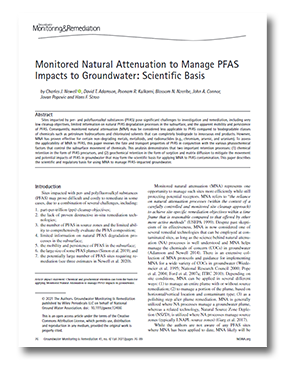 This article by Charles J. Newell et al. published in Groundwater Monitoring & Remediation discusses the scientific and regulatory basis for using MNA to manage PFAS-impacted groundwater, which has been effective for non-degrading contaminants.
This article by Charles J. Newell et al. published in Groundwater Monitoring & Remediation discusses the scientific and regulatory basis for using MNA to manage PFAS-impacted groundwater, which has been effective for non-degrading contaminants. PFAS contamination is widespread globally. Soil samples from over 2,500 sites reveal significant PFAS presence, even in remote areas. PFAS retention in soil and potential migration to groundwater and surface water emphasize the need for further research and site investigations.
PFAS contamination is widespread globally. Soil samples from over 2,500 sites reveal significant PFAS presence, even in remote areas. PFAS retention in soil and potential migration to groundwater and surface water emphasize the need for further research and site investigations.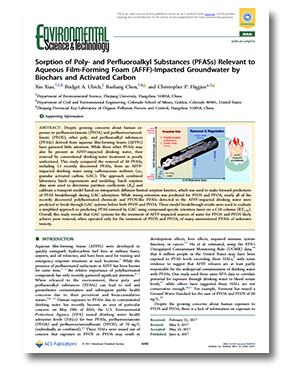 Study compares removal of various PFASs from AFFF-impacted drinking water using carbonaceous sorbents. While PFOS and PFOA removal is predicted, many other PFASs may breakthrough GAC systems. Simplified predictive models aid in assessing PFAS removal efficiency.
Study compares removal of various PFASs from AFFF-impacted drinking water using carbonaceous sorbents. While PFOS and PFOA removal is predicted, many other PFASs may breakthrough GAC systems. Simplified predictive models aid in assessing PFAS removal efficiency.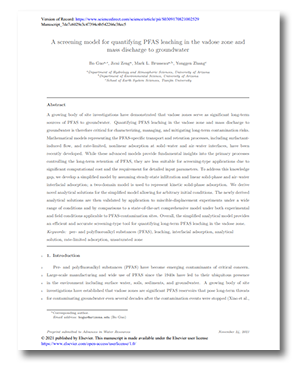 Vadose zones are significant sources of PFAS contamination in groundwater. Simplified models efficiently quantify PFAS leaching, aiding risk assessment. These models, validated against comprehensive ones, offer valuable screening tools for managing long-term contamination risks.
Vadose zones are significant sources of PFAS contamination in groundwater. Simplified models efficiently quantify PFAS leaching, aiding risk assessment. These models, validated against comprehensive ones, offer valuable screening tools for managing long-term contamination risks.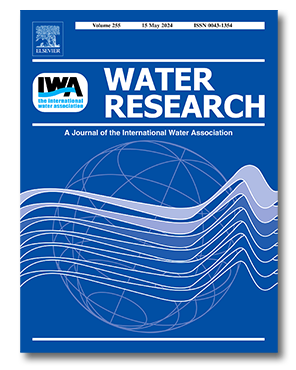 Sorption kinetics and isotherms of PFOS and PFOA on different adsorbents are investigated. PAC and AI400 show high sorption capacities, while GAC exhibits lower capacity. Sorption mechanisms involve ion exchange, electrostatic, and hydrophobic interactions.
Sorption kinetics and isotherms of PFOS and PFOA on different adsorbents are investigated. PAC and AI400 show high sorption capacities, while GAC exhibits lower capacity. Sorption mechanisms involve ion exchange, electrostatic, and hydrophobic interactions.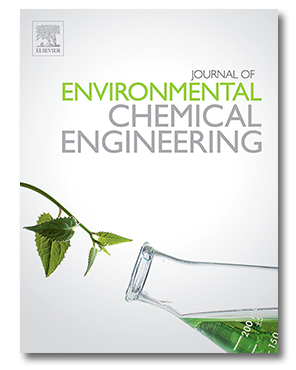 PFAS sorption behavior on various sorbents is studied. Activated carbons exhibit high sorption capacity. Sorption increases with PFAS chain length, with electrostatic and hydrophobic interactions dominating. Dyes serve as effective proxies for PFAS sorption behavior.
PFAS sorption behavior on various sorbents is studied. Activated carbons exhibit high sorption capacity. Sorption increases with PFAS chain length, with electrostatic and hydrophobic interactions dominating. Dyes serve as effective proxies for PFAS sorption behavior.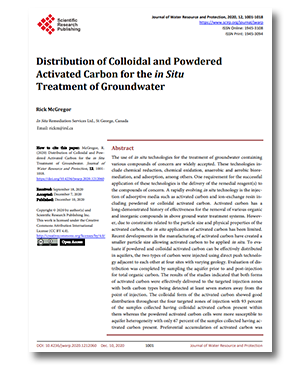 To evaluate if powdered activated carbon (PAC) and colloidal activated carbon (CAC) can be effectively distributed in aquifers, the two types of carbon were injected using direct push technology adjacent to each other at four sites with varying geology.
To evaluate if powdered activated carbon (PAC) and colloidal activated carbon (CAC) can be effectively distributed in aquifers, the two types of carbon were injected using direct push technology adjacent to each other at four sites with varying geology. Effectiveness of carbon-based sorbents in stabilizing PFAS contamination in soils is evaluated over four years. Powdered and colloidal activated carbons prove durable, maintaining high effectiveness. Sorbent performance aligns with physical and chemical characteristics, highlighting the importance of long-term stability.
Effectiveness of carbon-based sorbents in stabilizing PFAS contamination in soils is evaluated over four years. Powdered and colloidal activated carbons prove durable, maintaining high effectiveness. Sorbent performance aligns with physical and chemical characteristics, highlighting the importance of long-term stability.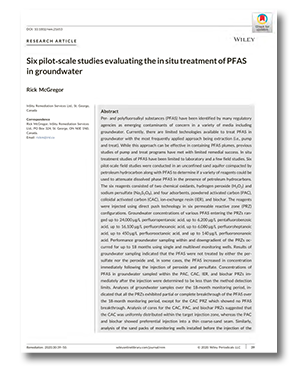 This article published in Wiley’s Remediation Journal reviews six pilot-scale in-situ field studies of an unconfined sand aquifer impacted by both petroleum hydrocarbons and PFAS to determine if a variety of reagents could be used to attenuate the dissolved PFAS.
This article published in Wiley’s Remediation Journal reviews six pilot-scale in-situ field studies of an unconfined sand aquifer impacted by both petroleum hydrocarbons and PFAS to determine if a variety of reagents could be used to attenuate the dissolved PFAS.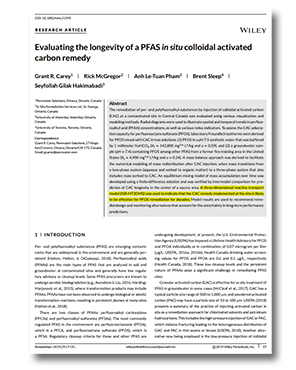 A three-dimensional reactive transport model (ISR-MT3DMS) was used to indicate that the CAC remedy implemented at the site is likely to be effective for PFOS remediation for decades.
A three-dimensional reactive transport model (ISR-MT3DMS) was used to indicate that the CAC remedy implemented at the site is likely to be effective for PFOS remediation for decades.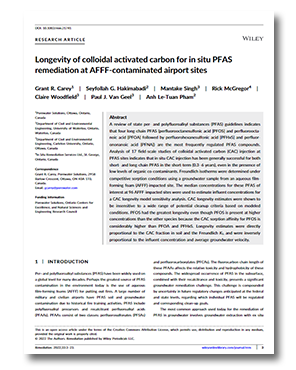 Case studies of 17 PFAS field sites showing successful PlumeStop performance results for up to six years and counting. In-Situ Remediation Model (ISR-MT3DMS) indicates PlumeStop longevity that may occur at a wide range of AFFF-impacted military and airport sites.
Case studies of 17 PFAS field sites showing successful PlumeStop performance results for up to six years and counting. In-Situ Remediation Model (ISR-MT3DMS) indicates PlumeStop longevity that may occur at a wide range of AFFF-impacted military and airport sites.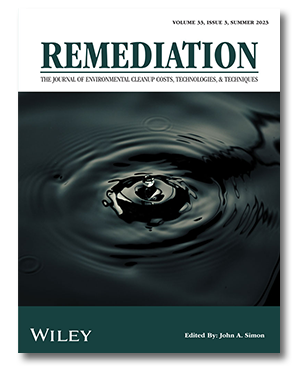 This study explores in situ treatment of PFAS at the air-water interface within source zones using colloidal activated carbon (CAC). Results over 1.5 years show effective attenuation of PFAS, with concentrations below detection limits, except for PFPeA, indicating successful delivery and treatment within the source zone.
This study explores in situ treatment of PFAS at the air-water interface within source zones using colloidal activated carbon (CAC). Results over 1.5 years show effective attenuation of PFAS, with concentrations below detection limits, except for PFPeA, indicating successful delivery and treatment within the source zone.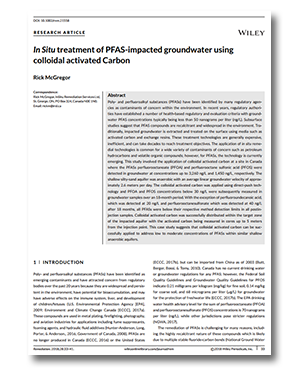 Documenting the first ever in situ PlumeStop application to treat PFAS, a single application of PlumeStop resulted in a significant reduction of contaminant concentrations to below standards for 18+ months since the injection. Modeling indicates that the PlumeStop application event should keep the PFAS contained within the source area for decades.
Documenting the first ever in situ PlumeStop application to treat PFAS, a single application of PlumeStop resulted in a significant reduction of contaminant concentrations to below standards for 18+ months since the injection. Modeling indicates that the PlumeStop application event should keep the PFAS contained within the source area for decades.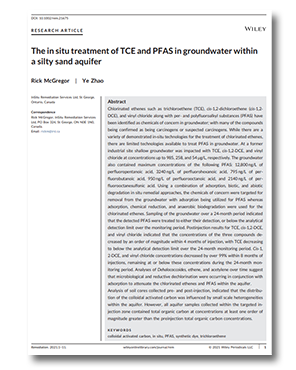 A case study of in-situ treatment of TCE and PFAS in groundwater at an industrial site within a silty sand aquifer. Sampling of the groundwater over a 24‐month period indicated that the detected PFAS were treated to either their detection, or below the analytical detection limit over the monitoring period.
A case study of in-situ treatment of TCE and PFAS in groundwater at an industrial site within a silty sand aquifer. Sampling of the groundwater over a 24‐month period indicated that the detected PFAS were treated to either their detection, or below the analytical detection limit over the monitoring period.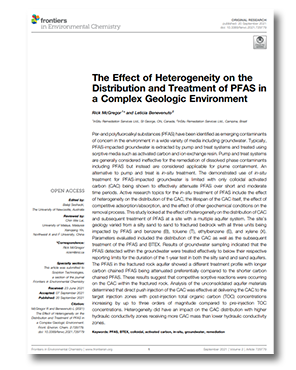 This article reviews a case study of the effect of heterogeneity on the distribution of colloidal activated carbon (CAC) and subsequent treatment of PFAS at a site with a multiple aquifer system. PFAS in groundwater were treated effectively to below their respective reporting limits for the duration of the 1-year test in both the silty sand and sand aquifers.
This article reviews a case study of the effect of heterogeneity on the distribution of colloidal activated carbon (CAC) and subsequent treatment of PFAS at a site with a multiple aquifer system. PFAS in groundwater were treated effectively to below their respective reporting limits for the duration of the 1-year test in both the silty sand and sand aquifers.